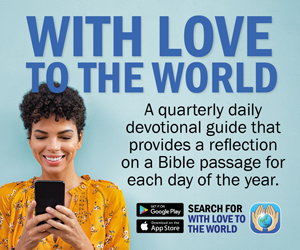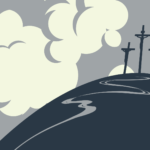“They have taken away my Lord and I don’t know where they have put him.” – Mary at the tomb, John 20:13.
This Easter, I have been reflecting on the resurrection account found in John 20. Mary comes to the tomb to bless the body of Christ and is instead met with a rolled away stone and no body to be found. She weeps. It is not lost on me that it is Mary who is faithfully there, courageously fulfilling the mourning rituals even when it was politically dangerous to out oneself as a disciple of Jesus mere days after his death. Indeed, the other Gospel accounts also reveal it was Jesus’ closest female followers who were first to continue the public elements of mourning while the rest of his followers remained paralysed by their fear.
Mary meets two angels in the tomb, who I can only assume seemed human due to her utter lack of surprise and reverence. “Why are you crying,” they asked. “Because they have taken away my Lord and I don’t know where they have put him,” replies Mary. This comment from Mary has leaped off the pages of scripture for me this year.
I wonder if, like me, there have been times in your life you have gone looking for Christ and found him gone, distant, missing? Where are the spaces we need the resurrected Christ to show up in 2025?
Of course, the story continues, and Christ appears. Mary flings herself on him and they embrace before he gently guides her towards the task of being a harbinger of hope – spreading the news of a resurrected saviour to his heartbroken and hiding followers. I don’t know if you can relate to this or not, but I have often found that when Christ feels most distant in my life, his greatest works of love and resurrection are just around the corner. In the background of the disciple’s moment of utter despair at the loss of literally everything they had pinned their lives on for the past several years, Jesus is very literally doing an act of resurrection. What happens next? First, much like Mary, they have a face to face and personal encounter with the resurrected Christ. Then, they become harbingers of resurrection for their world. In their everyday living of life, they start a ‘practice’ of resurrection. They practice resurrection as they: prioritise community and equity over economy; learn to remove barriers of race and background to provide all a seat at the table; bring healing to those around them; care for orphans and widows; and respond with mercy to a culture that was fundamentally stacked against them.
If your Lord is feeling gone, distant, or missing in 2025, it is my prayer that, in your own way, you have a deep and personal encounter with the resurrected Christ. My hope is that as we encounter the resurrected Christ, we are then also spurred on in our own practices of resurrection. The photo included with this article was taken in the skies of Riverside, CA, on resurrection Sunday in 2020. The faith community I was a part of at the time chose to literally fly that reminder through our city, linked to a social campaign of a dozen or so ways to practice resurrection even while in lockdown.
In 2025, the need for a cultivated practice of resurrection feels as poignant as ever. As we look at a world becoming increasingly nationalistic and tribal, we get to practice resurrection in how we open doors and knock down the walls of division around us. As we experience the acceleration of climate change accompanied by a deceleration of climate policy, we get to practice resurrection in the way we choose to care for creation and those most impacted it’s changing. As society becomes more isolated and lonely, we get to practice resurrection every time we pause to create a moment of true connection. As overwhelm, mental health needs, and burnout are on the rise, we get to practice resurrection as we embrace rhythms of rest. And the list could go on….
Where is it in 2025 you most need to encounter the resurrected Christ in your life? As you come face to face with Jesus again and experience his loving renewal of your soul, how is he spurring you on to practice resurrection?
David Toogood is the Pulse Team Education and Resourcing Facilitator











